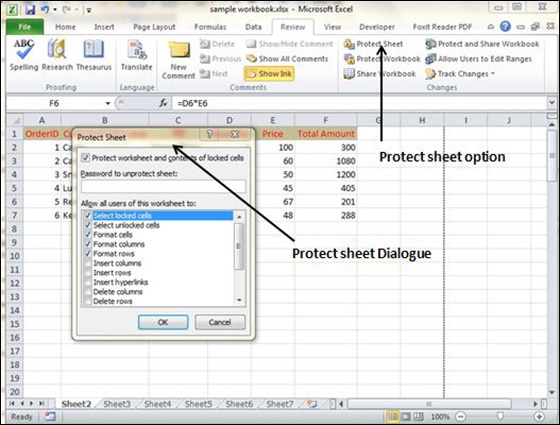5 Ways to Edit Protected Excel Sheets Easily

Excel spreadsheets are often protected to prevent unauthorized changes, which can be a challenge when you need to make edits. However, there are legitimate reasons to unlock and edit these documents, especially when you have access or the right permissions. Here are five methods to edit protected Excel sheets effortlessly:
Method 1: Using VBA to Remove Password Protection

Visual Basic for Applications (VBA) can be a powerful tool in removing password protection from Excel sheets:
- Open Excel Workbook: Start by opening the protected Excel workbook.
- Open Visual Basic Editor: Press
Alt + F11to open the VBA editor. - Insert Module: Click Insert > Module to create a new module.
- Copy and Paste VBA Code: Paste the following VBA code into the module:
Sub PasswordBreaker() Dim i As Integer, j As Integer, k As Integer Dim l As Integer, m As Integer Dim pass As String For i = 65 To 66 'A-B For j = 65 To 66 For k = 65 To 66 For l = 65 To 66 For m = 32 To 126 pass = pass + Chr(i) + Chr(j) + Chr(k) + Chr(l) + Chr(m) If ActiveSheet.Password = pass Then MsgBox "Password is " & pass Exit Sub End If pass = "" Next Next Next Next Next MsgBox "Incorrect Password" End Sub - Run the Macro: Run the macro by pressing
F5. - Unprotect the Sheet: The VBA will attempt to unlock the sheet. If successful, you’ll be able to edit the sheet without any protection.
⚠️ Note: This method works only for sheets protected with simple passwords. Complex passwords might take longer to crack.
Method 2: Using Excel Password Remover Tools

Various software tools can remove password protection from Excel sheets:
- PassFab for Excel: A widely used tool that can remove both file and sheet-level protection.
- Excel Password Recovery: Offers free and paid versions to unlock spreadsheets.
- Elcomsoft Advanced Office Password Recovery: Known for its advanced recovery methods.
To use these tools:
- Download and install the tool.
- Open the tool and select the protected Excel file.
- Choose the recovery method or type of protection to remove.
- Wait for the tool to break the protection.
Method 3: Modifying File Extensions to Unlock Sheets

This method involves changing the file extension to access the XML files inside:
- Change Extension: Rename the Excel file from .xlsx to .zip.
- Open Zip File: Extract the zip file to see the Excel file's internals.
- Navigate to Sheet: Go to xl > worksheets, where you'll find XML files for each sheet.
- Edit XML: Open the XML file in a text editor and look for the 'sheetProtection' tag. Remove this tag to unprotect the sheet.
- Rebuild Workbook: Re-compress the files back into a .zip and rename it to .xlsx.
⚠️ Note: This method alters the file structure. Backup your original file before proceeding.
Method 4: Getting Permissions to Edit

Sometimes, the most straightforward method is to seek permission:
- Contact the person who set up the protection.
- Ask for temporary permission or for the password directly.
- If you’re part of an organization, check if there are policies or IT support for this purpose.
Method 5: Using Third-Party Office Online Services

Some online platforms allow you to remove protection from Excel files:
- Upload Protected File: Use services like Smallpdf or Online Excel Password Remover.
- Remove Protection: Select the option to remove protection or unlock the sheet.
- Download Unprotected File: Once processed, download the file to your local system.
⚠️ Note: Be cautious with online services as they might not be secure for sensitive data.
In summary, unlocking protected Excel sheets can be achieved through multiple avenues. VBA code, password recovery tools, manipulating file extensions, obtaining permissions, and using online services provide various solutions for users to edit protected spreadsheets. Whether you're in a professional environment needing access to edit documents or seeking to recover your own forgotten passwords, understanding these methods can save time and effort.
Is it legal to use these methods to edit protected Excel sheets?

+
The legality depends on your permissions and the context. If you have legitimate access or are removing protection for your own or organizationally authorized purposes, it is typically legal. Unauthorized access to protected files, however, could be illegal.
What should I do if none of these methods work?

+
If the protection is too strong or you do not have the right permissions, you might need to recreate the spreadsheet or seek professional help from IT or a data recovery service.
Can I protect my Excel sheets after editing?

+
Yes, after making necessary edits, you can reapply protection to the Excel sheet by selecting ‘Protect Sheet’ from the Review tab and setting a new password.
How can I recover a forgotten Excel password?

+
If you’ve forgotten the password, you’ll need to use password recovery tools or contact Microsoft Support for potential recovery options. Remember, without the original password or authorized access, these methods might not always work.
Are there any risks involved in editing protected Excel sheets?

+
Yes, risks include altering the file structure, data loss, or violating access permissions. Always ensure you have a backup and understand the implications of removing protection.



